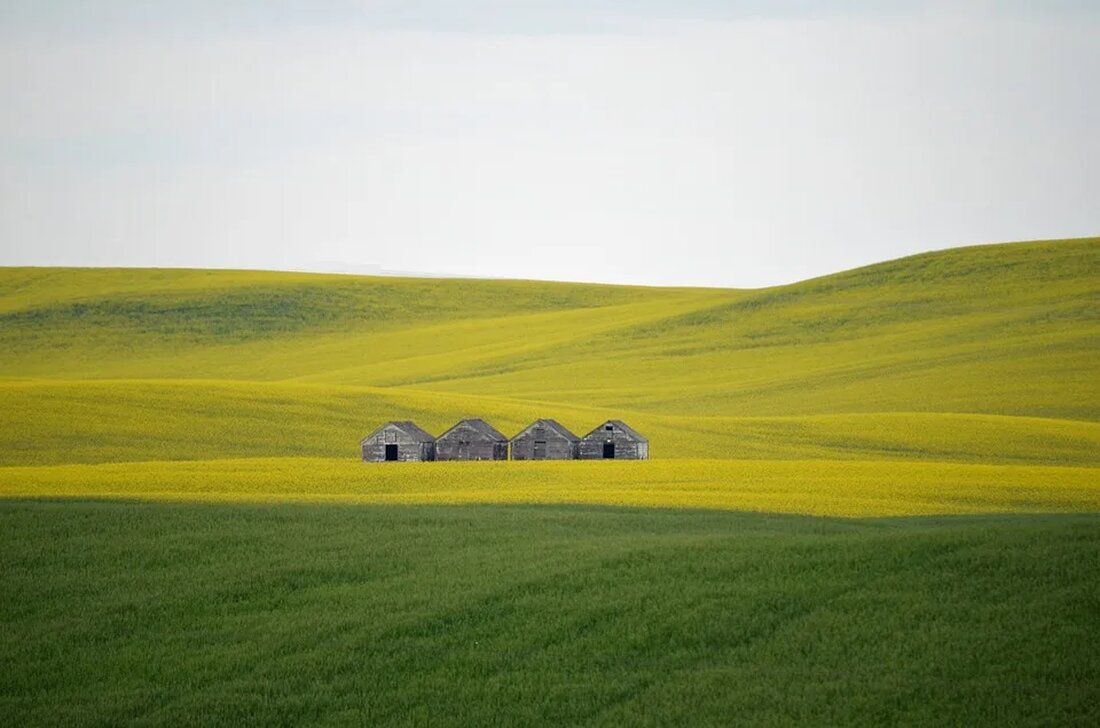The role of vegetation in dune landscapes
In nature, plants play a crucial role in shaping landforms, particularly in areas such as dune landscapes. The vegetation in dune landscapes fulfills both ecological and physiological functions. This article will examine in depth the important role that vegetation plays in dune landscapes, outline the ecosystem services it provides, and explain how people can protect and sustainably use these plants. The formation of dunes In order to understand the influence of vegetation in dune landscapes, it is worth briefly explaining how dunes form. Dunes are made of sand that is blown into patterns and formations by the wind. These patterns vary depending...

The role of vegetation in dune landscapes
In nature, plants play a crucial role in shaping landforms, particularly in areas such as dune landscapes. The vegetation in dune landscapes fulfills both ecological and physiological functions. This article will examine in depth the important role that vegetation plays in dune landscapes, outline the ecosystem services it provides, and explain how people can protect and sustainably use these plants.
The formation of dunes
In order to understand the influence of vegetation in dune landscapes, it is worth briefly explaining how dunes are formed. Dunes are made of sand that is blown into patterns and formations by the wind. These patterns vary depending on wind direction and strength, amount of sand, and existing vegetation. Vegetation acts as a natural barrier to the erosive force of wind by deflecting it, slowing it down, and trapping sand particles that would otherwise move.
The function of vegetation in dune landscapes
The vegetation in dune landscapes has the following main functions:
Stabilization of the dunes
Plants contribute significantly to the stability of dunes and protect them from erosion. The plants' root systems act as natural networks that bind the loose sand, ensuring the structural integrity of the dunes. Plants, especially grasses, are resilient to the harsh conditions found in dune landscapes and are often the first organisms to establish themselves in these areas.
Nutrient cycle
Vegetation also plays an important role in dune nutrient cycling. It stores nutrients in its leaves and root systems and releases them into the soil as it rots. This process helps make the otherwise nutrient-poor sandy soil more productive, which in turn encourages colonization by other plant species.
Habitat and food source
Dune vegetation provides important habitat and food sources for a variety of wildlife. From insects and spiders to birds and small mammals, to larger herbivores and carnivores, many species can benefit from dune vegetation. This in turn contributes to biodiversity and the ecological balance in dune landscapes.
Influencing dune patterning
In addition to these basic functions, vegetation can also influence the formation and development of dune landscapes. Studies have shown that vegetation changes the shape and orientation of dunes and influences their mobility.
Shape and orientation of dunes
Vegetation can significantly change the appearance of dunes. Plants, especially grasses, can change the pattern of dunes by binding sand and thus influencing the development of dune ridges.
Mobility of the dunes
In areas where vegetation predominates, dunes are likely to be more stable and less mobile. In contrast, areas with little vegetation are more susceptible to changes caused by wind and water.
Ecosystem services of vegetation
In addition to the role of vegetation in shaping dune landscapes, it also provides valuable ecosystem services. These include:
Climate regulation
Vegetation plays a key role in regulating the climate, particularly by storing carbon. Plants absorb carbon dioxide from the atmosphere and store it in their biomass. This helps reduce carbon levels in the atmosphere and therefore mitigate global warming processes.
Water storage and treatment
In sandy environments such as dune landscapes, vegetation can help store and purify water. The roots of the plants hold the sand together, increasing its water-holding capacity. In addition, vegetation can act as a natural filter and remove possible pollutants from the water.
The future of dune landscapes: preservation and sustainable use
Given climate change and increasing anthropogenic pressure, it is crucial to protect vegetation in dune landscapes. By raising awareness, protective measures and sustainable use, the existence of dune vegetation can be secured and its functions maintained.
Awareness raising
A first step to protecting dune vegetation is to educate the public about its importance. Many people are unaware that the plants in dune landscapes help stabilize the sand, provide nutrients and create habitat for wildlife.
Protective measures
Protected areas can help preserve dune landscapes and their vegetation. It is important to implement anti-erosion policies, control invasive species and regulate the public use of dune areas.
Sustainable use
The sustainable use of dune landscapes can also help protect vegetation. This could be done, for example, by following paths rather than entering the dunes, using viewing platforms and appreciating the dunes "from a distance".
Final Thoughts
Vegetation in dune landscapes plays a critical role in shaping, stabilizing and providing ecosystem services in these unique environments. Their preservation and sustainable use is crucial for the future of our dunes.

 Suche
Suche
 Mein Konto
Mein Konto
